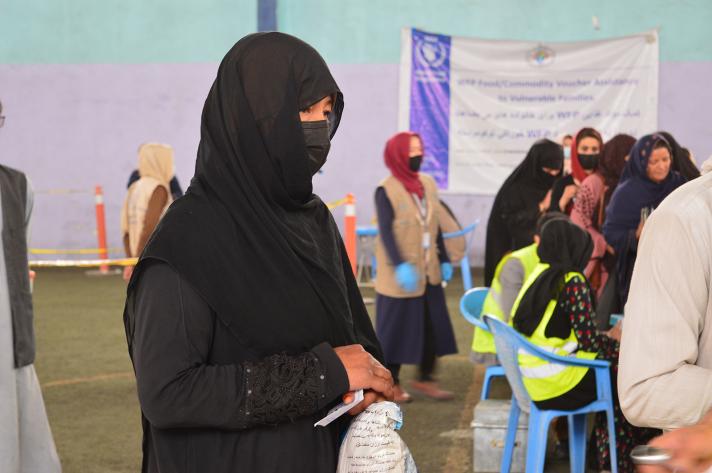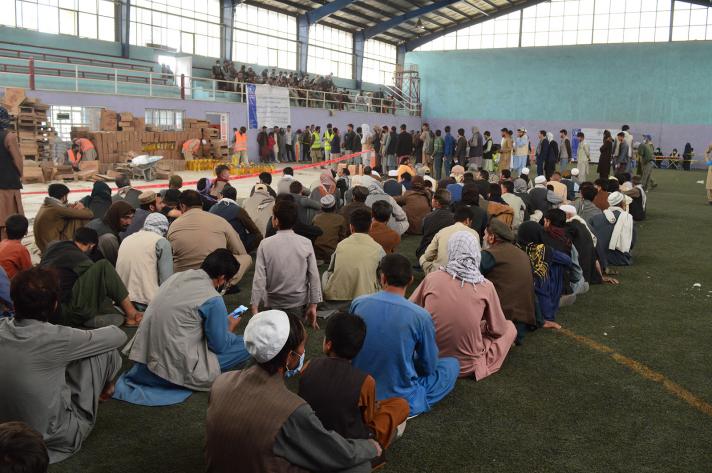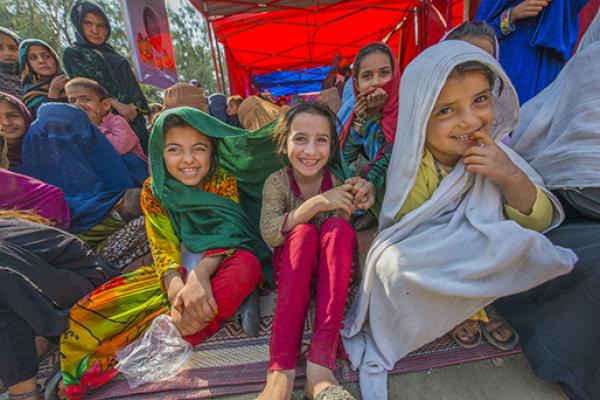Nearly 23 million people in Afghanistan—over half the population—are facing hunger in 2022, including 8.7 million who are one step away from famine-like conditions.
EU humanitarian funding is helping the World Food Programme (WFP) to provide emergency food and nutrition assistance to some of Afghanistan’s most vulnerable families.
“When you have 23 million people on the verge of starvation, every morsel of food helps,” said Mary-Ellen McGroarty, the WFP Afghanistan Country Director and Representative.
A staggering 93% of people across Afghanistan did not have enough food to eat in March.
Decades of conflict, climatic shocks and an economic crisis have combined to push families beyond their limits. Across the country, few families have been spared, and parents are finding it harder than ever before to give their children even a basic meal.
“The support from the EU has been incredible,” said Mary-Ellen McGroarty. “The EU’s rapid support as the depth and extent of the crisis became evident allowed WFP to quickly scale-up our emergency response. EU support provides critical relief to families and communities suffering unprecedented hardships.”
Since the beginning of 2022, WFP has provided 16 million people in Afghanistan with lifesaving food and nutrition assistance across 34 provinces, thanks to donors like the EU.
In addition to monthly food, EU funding is also helping to keep the United Nations Humanitarian Air Service (UNHAS) operating, a critical enabler for the humanitarian response in Afghanistan.
In the first months of 2022 UNHAS carried out 950 flights transporting humanitarian workers to 20 destinations across the country.
Families unable to cope
Tajwar is a widow and lives in the capital city of Kabul. She used to work as a housekeeper but lost her job when her former employer couldn’t afford to keep her on.
Due to the economic crisis gripping the country since August 2021, her income has reduced to half of what it once was.
She has managed to find some part-time work, but what she makes is not enough to pay household bills, and it has been 7 months since she’s been able to pay her rent, water, and electricity bills.
We met Tajwar recently at a WFP food assistance site in Kabul. She told us that for a short time, her eldest son was able to find some small jobs but became unwell and couldn’t work.
When the family had some bread, she would divide it into small pieces for her children to share. “It was barely enough to keep the hunger away,” she said.
“I was about to sell my 8-year-old daughter,” the mother continued. “But the family that was going to buy my daughter showed sympathy and told me not to sell my child.”
“If there was no World Food Programme, what would I have done with my kids?” asks Tajwar. “We thank all the people and countries who have sent this help, and for supporting us. We hope they can continue.”
Across the country, stories like Tajwar’s are common as families are forced to turn to drastic measures to feed their families, such as eating less healthy food, and borrowing money to buy food and other essential items.
Recent data from WFP estimates that, in Afghanistan, almost 100% of female-headed households like Tajwar’s do not have enough to eat. The food assistance they receive from WFP and other humanitarian organisations is a lifeline for millions of Afghans.
In addition to general food distributions, WFP also provides (i) midday snacks to over 473,000 children in schools, (ii) malnutrition prevention and treatment for mothers and children, and (iii) works with families and communities on projects to mitigate drought and rebuild livelihoods.
The conflict, COVID-19, climate change and now the war in Ukraine continue to push food and fuel prices to record highs in many places, including Afghanistan. This is why support from donors such as the EU is critical to WFP’s operations, and the people in Afghanistan and elsewhere.
Urgent funding is required for WFP to respond effectively, rapidly, and flexibly to emerging needs. WFP requires US$ 1.4 billion to support around 23 million Afghans until the end of 2022.
Story by Kun Li, Regional Communications Officer, WFP Asia and the Pacific.
Publication date: 15/07/2022






